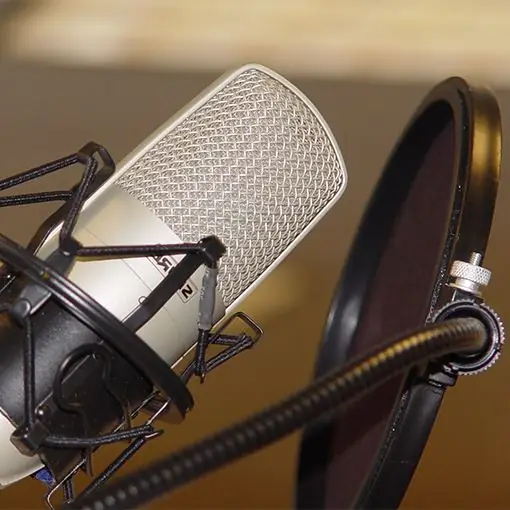Listening to a voice recording made in a room that is not intended for such a purpose, you can find that the sound of speech is accompanied by a significant amount of extraneous noises of various origins. You can cope with this problem by applying a noise reduction filter, which is present in editors like Adobe Audition.

Necessary
- - file with voice recording;
- - Adobe Audition program.
Instructions
Step 1
Open the recording to be processed in an audio editing program. If you are going to work with an mp3 or wav file, switch to the editing mode using the Edit View option of the Workspace group of the Window menu and load the required sound with the Open command from the File menu. If you need to remove noise from the audio track of a video and save it as a separate file, the Open Audio from Video option from the same menu will do.
Step 2
To load the audio track of the video into the editor, which after processing should be saved in the original container, that is, in the same file with the image, switch to another workspace. To do this, use the Video + Audio Session command of the Workspace group. You can import the desired video into the program using the Import option of the noticeably shortened File menu.
Step 3
Switch the audio track opened in the audio and video session mode to the edit mode using the Edit File option from the context menu. You can select the desired file in the Files palette and use the Alt + Enter keys.
Step 4
Start playback of the recording by pressing the Play button of the Transport palette or pressing the Space bar. Find the area containing the noise sample that you want to remove from the track. This can be the very beginning of the recording, its end, or a pause between words. Select the found sample and apply the Alt + N keyboard shortcut. The specified fragment will be captured by the program as a noise profile and used in subsequent processing.
Step 5
To start the painstaking work of separating the voice from the noise, deselect it by clicking on an arbitrary part of the sound wave, and open the filter window with the Noise Reduction command in the Restoration group of the Effects menu. Clicking on the Preview button, listen to the processing result. If the sound is not sufficiently separated from the noise, move the squelch level control to the right and check the result again.
Step 6
Incorrect application of the captured profile can lead to the fact that part of the useful sound disappears along with the noise. To find out what part of the recording will be removed by the filter after application, enable the Keep Only Noise option in the settings field and use the Preview button. If, in addition to noise, you hear a voice in this mode, reduce the noise reduction level by moving the slider to the left. You can clean up a recording in several steps using noise profiles captured in different parts of the track.
Step 7
Save the processed voice using the Save As command of the File menu. If at the output you need to get a video with a cleaned audio track, select the audio in the file palette and apply the Insert Into Multitrack option to it from the context menu. Go back to the Video + Audio Session workspace and insert video into one of the free tracks in the same way as audio. To save the file, use the Video command in the Export group of the File menu.






